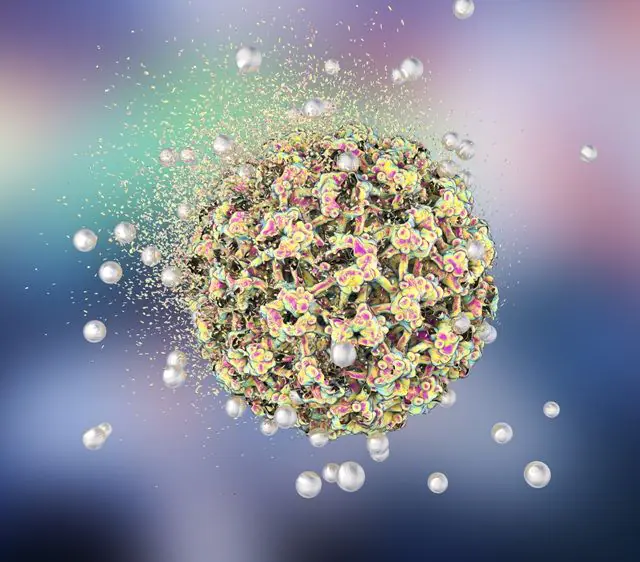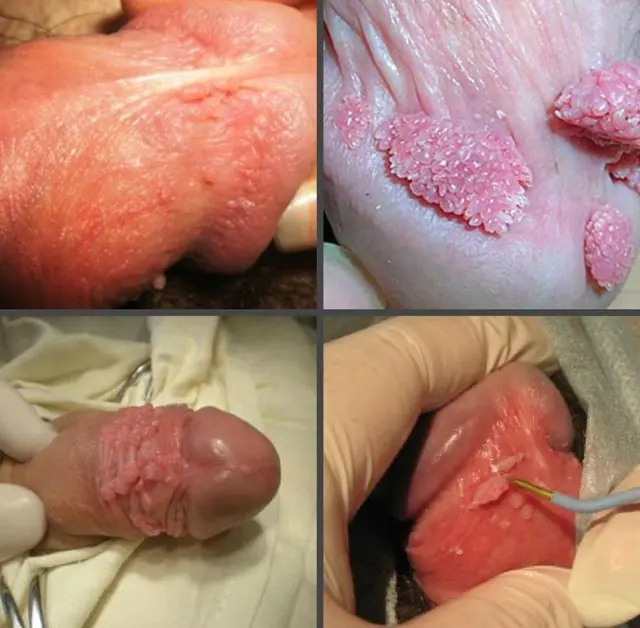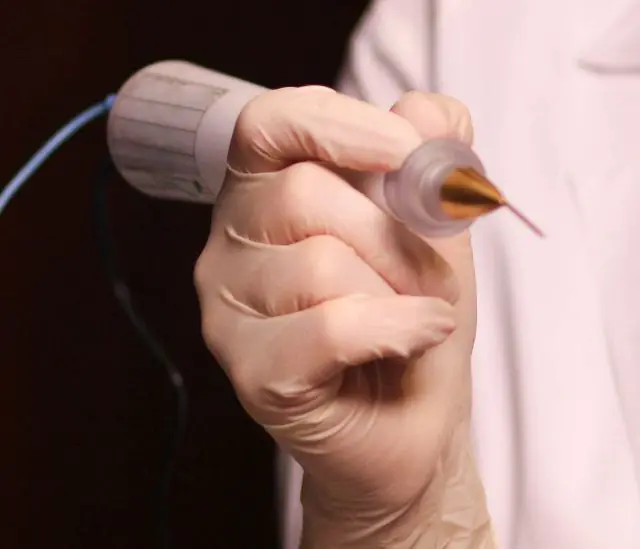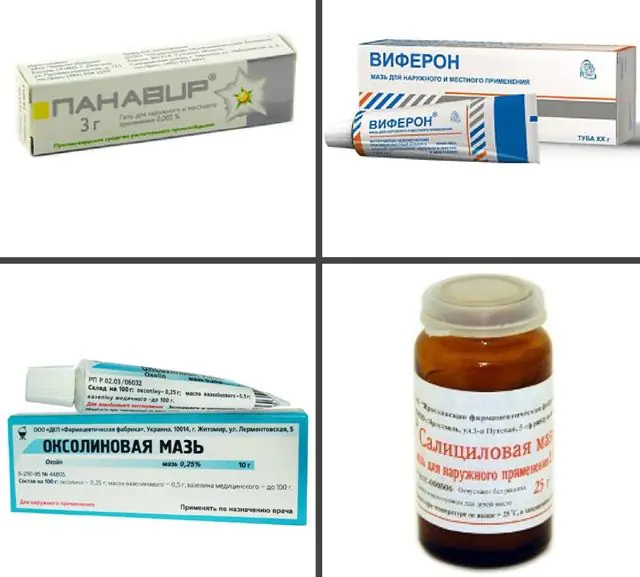
- Reasons for appearance
- Symptoms of papillomas on the frenulum of the head
- Removal methods
- Treatment with medications
- Recipes for folk remedies
Papillomas on the frenulum of the head are benign growths, the growth of which is provoked by the human papillomavirus. This manifestation of the disease not only causes aesthetic discomfort, but also poses a serious danger for both the male carrier and his sexual partner. The most undesirable consequence of the lack of correct and timely therapy is the development of the oncological process. That is why a man should not ignore the appearance of such formations on the penis. For diagnosis and treatment, you must consult a qualified medical professional.
Causes of papilloma on the frenulum of the head

The development of papillomas on the frenulum and in other places is provoked exclusively by the human papillomavirus. Once on the skin and mucous membranes, it actively penetrates into the epithelial layer. The duration of the incubation period of HPV is a very loose concept, because From the moment of infection to the moment the first manifestations appear, only 1 month or several months or even years may pass. This entirely depends on the functionality of the human immune system.
The main route of infection with HPV for an adult man is intimate intimacy with an infected person. Moreover, this is not only sexual intercourse without using a condom, but also oral sex. It is noteworthy that using a condom does not provide a 100% guarantee of not contracting the virus. For the pathogen, minimal touch and the presence of microdamages to skin tissue or mucous membranes are sufficient.
The pathogen is also transmitted at birth from mother to child and through contact and household contact from household members. There is a lower likelihood of infection when visiting public places where there is high humidity - swimming pools, saunas, locker rooms. According to some reports, the virus can survive for a short time outside the human body.
A decrease in the body's defenses is the fundamental reason for the onset of the acute course of this viral infection and the appearance of papillomas on the frenulum, glans penis, foreskin, coronary sulcus and even in the urethra.
The following external and internal factors can provoke weakening of the immune system:
- Stress of any etiology. Exposure to frequent emotional shocks, physical and mental trauma, of course, negatively affects the general condition of the body
- Acute and chronic diseases. Both a common cold and more serious pathologies can affect the state of immunity, regardless of the etiology - viral, bacterial or fungal. An increased risk factor is sexually transmitted diseases, for example, HIV, chlamydia, syphilis, hepatitis and others. To prevent the activation of the virus and the appearance of papilloma on the frenulum, cases with diagnosed diabetes mellitus, diseases of the gastrointestinal tract, urinary system, pathology of blood vessels, heart, and hematopoietic organs require special attention.
- Failure to comply with personal hygiene rules. Cleanliness is the key to health, you can’t argue with that. The lack of hygiene procedures provokes a violation of the microflora on the skin and mucous membranes, irritation often appears and the active process of reproduction of pathological microflora begins.
- Bad habits. Tobacco smoke, alcoholic drinks and drugs, in addition to dubious pleasure, cause great harm to all systems of the body, weakening it and opening the way to life-threatening diseases. It is these addictions that, more than other factors, provoke the dangerous degeneration of papillomas on the frenulum into cancerous formations.
- Environmental pollution. The state of the environment leaves much to be desired. Due to contamination of vital drinking water and air, the incidence of various pathologies is increasing. Each person's body becomes more vulnerable to pathogens.
- Poor nutrition. This factor also negatively affects the immune system, because the lack of nutrients due to the imperfection of the daily diet along with the consumption of unhealthy food is harmful to health.
See also the reasons for the formation of warts on the penis in men.
Symptoms of papillomas on the frenulum of the head of the penis

Photo of papillomas on the frenulum of the head of the penis
The difficulty of treating papillomas on the frenulum of the head is due to the fact that HPV occurs in a chronic form. It is believed that it is impossible to completely remove the virus from the human body. Depending on the state of health, the pathogen either becomes active, causing the appearance of new benign formations, or subsides for an indefinite period of time, without revealing itself in any way.
You can suspect that you have the disease either after contact with an infected person, or after the appearance of unknown formations on various parts of the body.
Papillomas can appear on the entire surface of the skin and mucous membranes, but the most alarming and frightening thing for a man is the fact of the formation of papillomas on the frenulum and other parts of the penis. This is the main symptom of the disease.
It is worth understanding that not all growths and formations are a manifestation of HPV. For example, quite often pearlescent papules appear on the head of the penis, which have nothing to do with this disease or other pathologies. They are absolutely safe anatomical changes.Quite often, formations caused by the human papillomavirus do not bring physical discomfort to a man, but can significantly affect his self-esteem in sexual terms.
The main symptoms of papilloma on the frenulum of the head in a complicated course of the disease are:
- Feeling of pain when urinating, difficulty removing urine;
- Burning and itching on the foreskin, glans and urethra;
- Pain and discomfort during sexual intercourse;
- Bleeding of formations, the appearance of long-healing ulcers;
- Deterioration in general health.
The head of the penis is rarely affected by the virus; mostly benign neoplasms grow around it - under the folds of the foreskin, on the frenulum. They can also gradually grow on the skin of the penis.
A photo of papillomas on the frenulum shows that they, as a rule, are located chaotically, in contrast to harmless pearlescent papules, which are localized symmetrically. Formations whose growth is provoked by HPV may appear in single quantities and exist for a long time, but with the same probability the growths can grow rapidly, increasing in size and affecting large areas of the integument, creating entire colonies - it all depends on the viral load and the health status of the carrier .
Possible types of papillomas on different parts of the penis:
- Condylomas acuminata. The most common clinical manifestation of HPV is papillomas with pointed tips on the frenulum of the penis and foreskin. They are called genital warts. In appearance, they are very reminiscent of a cockscomb, and are mounted not on a thick base, but on a thin stem.
- Vulgar papillomas. They are rough growths. They most often appear on the skin of the penis, much less often around the head. The color practically does not differ from the shade of the surrounding healthy tissues, but there are also darker ones.
- Flat papillomas. They have a round shape and are pale pink or flesh-colored. They grow in width and practically do not protrude beyond the surface of healthy tissue.
- Buschke-Loewenstein condyloma. Its predecessors are often pointed papillomas on the frenulum. The formation occurs on the shaft of the penis due to not suppressed HPV activity in a timely manner. It can also grow into the scrotum and groin area. This is a large growth, characterized by intensive growth rates and is a harbinger of cancer.
A photo of a papilloma on the frenulum of the head gives an idea of what these benign neoplasms look like. However, often a visual examination may not be enough to make an accurate diagnosis. In this case, you need to undergo certain diagnostic procedures. Laboratory test results are the best way to determine the causes of tumors. Detecting the presence of a virus in the blood, determining the strain of the pathogen and the risk of developing an oncological process, and then prescribing comprehensive treatment is the main task of the attending physician.
A urologist or dermatologist can help with the problem if papillomas begin to appear on the frenulum. The first appointments are a blood test, a cytology smear, a urine test, and a tumor tissue biopsy.If a man develops papillomas in the genital area, but does not react in any way and does not attempt treatment, then the situation can significantly worsen. The provoking factor is primarily the deterioration of immune defense, as well as the appearance of concomitant diseases, for example, urolithiasis, pyelonephritis, and sexually transmitted diseases. When one infection complements another, the body loses strength even more rapidly.
Among the negative consequences that the presence of papilloma on the frenulum of the head can cause are:
- Decreased sexual activity;
- Disturbances in the functioning of the reproductive system, infertility;
- Development of diseases of the urinary system;
- Shortening of the foreskin;
- The appearance of erosion on the reproductive organ;
- The appearance of pain and bleeding during bowel movements, because very often, if there are papillomas around the head and on the frenulum, the same growths appear at the anus;
- Transformation of growth tissue and surrounding healthy cells into cancerous tumors, as a result, the formation of squamous cell carcinoma of the penis.
If HPV infection is confirmed, the doctor must prescribe tests for other infections - HIV, trichomoniasis, genital herpes, syphilis, gonorrhea, chlamydia and other sexually transmitted diseases. In such a situation, examination of the sexual partner is also mandatory.
If you do not act for a long time, the situation can worsen significantly. Warning signs appear indicating the possible beginning of the degeneration of papilloma on the frenulum into a malignant formation. So, phimosis often appears, i.e. There is a significant narrowing of the foreskin, its growth on the head. As a result, accumulations of secretion from the sebaceous glands, sperm, and urine appear in the folds, provoking the growth of pathogenic microflora. The formation of swelling of the tissues of the penis and the development of the inflammatory process gradually become noticeable. And as a result, foci with erosion are formed, which is often a harbinger of cancer. However, you should not rely on the fact that the absence of such symptoms indicates the absence of complications, because tissue degeneration can be asymptomatic.
Methods for removing papilloma on the frenulum of the head

Quite often, papillomas on the neck, arms, and legs are not removed, but refusal to destroy the growths is unacceptable and dangerous if they have formed on the penis or scrotum.
Before prescribing the procedure for instrumental destruction of papillomas, the doctor may recommend doing a biopsy of the growth to determine the structure of its cells and understand whether there is a danger of transformation into cancer.
Many options involve preliminary local anesthesia. For example, using an insulin syringe, lidocaine is injected under the frenulum, which completely prevents the conduction of impulses. The injection itself causes some discomfort, but subsequently during the main procedure no pain will be felt.
The main methods for removing papilloma on the frenulum and other parts of the penis are as follows:
- Laser destruction. Under the influence of a laser, benign formations literally evaporate. The manipulation is completed in a matter of minutes. The duration depends on the number and size of papillomas. The tissue recovery period is usually no more than 14 days. The minimum price for the procedure is 1000 rubles or 400 hryvnia.
- Radio wave removal. It is considered the safest method in the treatment of papilloma on the frenulum of the head. There are no scars left after the manipulation. It is actively used to remove entire colonies of protruding, pointed neoplasms. Along with high efficiency, the price is quite high - from 2000 rubles or 700 hryvnia.
- Electrocoagulation. A special device that emits electricity has a scorching effect on the tissue of a benign neoplasm. After the procedure, instead of a papilloma, a charred scab on the frenulum remains on the treated area. The price in Russia is from 1000 rubles, in Ukraine – from 300 hryvnia.
- Surgical removal. This is, in fact, a regular surgical operation, performed by a qualified surgeon using a scalpel. Typically, removal also involves healthy tissue, so this option is practically unacceptable for the treatment of tumors on the genitals. Price - from 500 rubles (300 hryvnia).
- Chemical coagulation. The essence of the method is chemical burning of growths. The procedure is associated with a certain risk of burns to healthy tissue. It is painful and provokes a long recovery period. Because of this, this method is extremely rarely used to eliminate tumors in the intimate area. Price - from 1000 rubles or 600 hryvnia.
- Cryodestruction. Potentially dangerous procedure because can cause destruction of healthy tissue along with the destruction of papilloma cells. Because of this, it is used extremely rarely for the treatment of papillomas on the frenulum of the head. During the manipulation, the growth is frozen with liquid nitrogen, which provokes the destruction of each treated cell. The price of manipulation is from 400 rubles (220 hryvnia).
Any of the methods involves being carried out within the walls of a specialized clinic using high-quality equipment. Manipulations should only be carried out by a qualified medical professional. All this will allow you to avoid undesirable consequences in the form of unreasonable damage to healthy tissue, infection, the development of any complications, or insufficiently scrupulous removal of papilloma on the frenulum and other parts of the penis.
Despite the fact that most of the described methods are minimally invasive, a man should undergo a period of rehabilitation, during which he must give up bad habits, carefully monitor hygiene, use drugs for local treatment that kill pathogens and heal damaged tissue, normalize diet and refuse intimate relations.
And only after complete healing of the scars and elimination of swelling can you return to normal sexual life, because physical condition must be restored. However, we should not forget that before or after removal, the doctor must prescribe medications to restore the body’s protective functions and fight the virus. Without drug treatment, papillomas on the frenulum and nearby tissues appear again.
Treatment of papilloma on the frenulum with medications

Photos of drugs for papillomas on the frenulum of the penis
Removal of tumors is, of course, considered mandatory when they are localized on the penis due to potential risks. However, a qualified doctor, based on the results of diagnostic procedures, is obliged to prescribe a number of medications not only for scar healing and pain relief during the rehabilitation period, but also to restore immunity and suppress the virus.
Frequently used means for local action after removal of papilloma on the glans, frenulum, and groove of the penis include the following:
- Salicylic ointment. Can be used in the presence of small growths and after removal as an anti-inflammatory agent. Has little effect on the activity of the virus. The course of treatment is about 1 month. Price - 27 rubles (13 hryvnia).
- Oxolinic ointment. A very gentle drug that has an antiviral effect. In rare cases, it can help reduce the size of papillomas. Provides multiple treatments throughout the day for 3 months. Price - 12 rubles (8 hryvnia).
- Viferon ointment. Has excellent anti-inflammatory and regenerative properties. Helps shorten the rehabilitation period. Treatment of papilloma on the frenulum involves four treatments per day for 1 to 4 weeks. Price - 220 rubles (130 hryvnia).
- Gel Panavir. At an early stage of development of neoplasms, with daily use it can completely eliminate papilloma. The ointment has an antiviral effect, restores local immunity and helps reduce the activity of the virus. Price - 130 rubles (75 hryvnia).
- Epigen-intim. Can be used as an adjuvant to combat pathological microflora, including HPV, and to accelerate tissue restoration. The price in Russia starts from 800 rubles, in Ukraine - from 450 hryvnia.
Oral medications are more effective in treating papilloma on the frenulum. They often have a wider range of beneficial effects and have a complex effect on the entire body.
Commonly prescribed medications include the following:
- Acyclovir, Zovirax. They contain the active substance acyclovir, which can have a direct detrimental effect on the virus, stopping its reproduction. The drugs actively strengthen the immune system. They are characterized by low toxicity to humans. Price - from 150 rubles (90 hryvnia).
- Alpizarin. A highly effective antiviral drug used to treat genital papillomas on the frenulum of the head. Price - 180 rubles (120 hryvnia).
- Arbidol. Complex drug. It has antiviral activity, prevents the microorganism from integrating into healthy cells, reducing the viral load. Provokes the synthesis of interferon, increasing the body's protective functions. Designed to prevent the development of complications. Has a prolonged effect. Price - from 150 rubles (90 hryvnia).
- Galavit. Refers to immunomodulatory drugs with anti-inflammatory properties. Price - from 310 rubles (220 hryvnia).
- Isoprinosine and Groprinosine. They contain the same active ingredient. Popular antiviral drugs. They actively suppress HPV, block the growth of papillomas on the frenulum and in other parts of the body, and stimulate the immune system. The price of Isoprinosine is 650 rubles (320 hryvnia), the price of Groprinosin is 590 rubles (330 hryvnia).
- Rimantadine. In a short time it helps to destroy the outer shell of the virus, often helping to eliminate small tumors. Often prescribed after instrumental removal, because prevents the fusion of the viral shell with individual parts of healthy cells. Price - from 90 rubles (50 hryvnia).
- Cycloferon. Stimulates the immune system, increasing the activity of internal resources in the fight against viral infection. It is often prescribed for the treatment of papillomas on the penis, including the frenulum. Price - from 180 rubles (130 hryvnia).
- Other drugs. Likopid, Allokin-alpha, Viferon, Immunomax.
The use of radical removal measures along with conservative methods gives a great chance of preventing the spread of infection, avoiding complications, improving intimate life in a short time and putting the virus to sleep for a long time.
Therapy for papillomas on the penis, including the frenulum, can be supplemented by taking vitamin complexes; it is also important to adjust your diet and take part in healthy sports.Recipes for folk remedies for papillomas on the frenulum

Any type of papillomas has a root and blood vessels; therefore, it is not advisable to subject them to injury or try to remove them yourself. The tissues on the penis are quite thin and sensitive, so the use of many folk remedies on the genitals, which can destroy tumors on the skin of the body, is undesirable and carries a certain danger.
Thus, it is highly not recommended to use celandine, tea tree essential oil, propolis, iodine, ammonia, garlic juice or lemon juice, vinegar and similar burning improvised means to treat papilloma on the frenulum.
The safest and those that can be beneficial are infusions and decoctions, baths and gruels from gentle herbal remedies, used to increase immunity, eliminate the deficiency of nutrients and disinfect scars after instrumental removal of papilloma on the head in the frenulum area. Among them the following stand out:
- Rose hip decoction. Boil the berries for 20 minutes, leave the broth for 30 minutes. Take 150 ml orally 2 times a day for a month.
- Baths with chamomile and St. John's wort. Ingredients - St. John's wort and chamomile - take 1 tbsp. l., pour a liter of boiling water, simmer over low heat for 20-30 minutes, dilute with warm water and use for sitz baths for 15 minutes. You can make compresses.
- Aloe pulp. Squeeze out the pulp from a freshly picked aloe leaf, place it on a cotton pad or piece of bandage, apply to the affected area and fix for several hours. The juice of this plant has a wide range of beneficial properties. In general, it has an excellent effect on the skin and mucous membranes.
- Applications with egg white. Chicken egg white quickly dries out small papillomas on the frenulum, under the foreskin and throughout the penis, but does not prevent recurrence of the disease.
Read also about treating papillomas with essential oils.
How to get rid of papillomas on the frenulum of the head - watch the video:
Among the large number of treatment options for papilloma on the frenulum, it is quite difficult to choose the most optimal one, which is why you should promptly seek help from a medical institution, where all the necessary studies will be carried out and adequate treatment will be prescribed, taking into account the individual characteristics of each patient. This way, every man will be able to protect himself from reproductive dysfunction, decreased libido and the development of cancer, as well as protect his sexual partner from dangerous consequences.
- Related article: Which doctor deals with papillomas in intimate places



